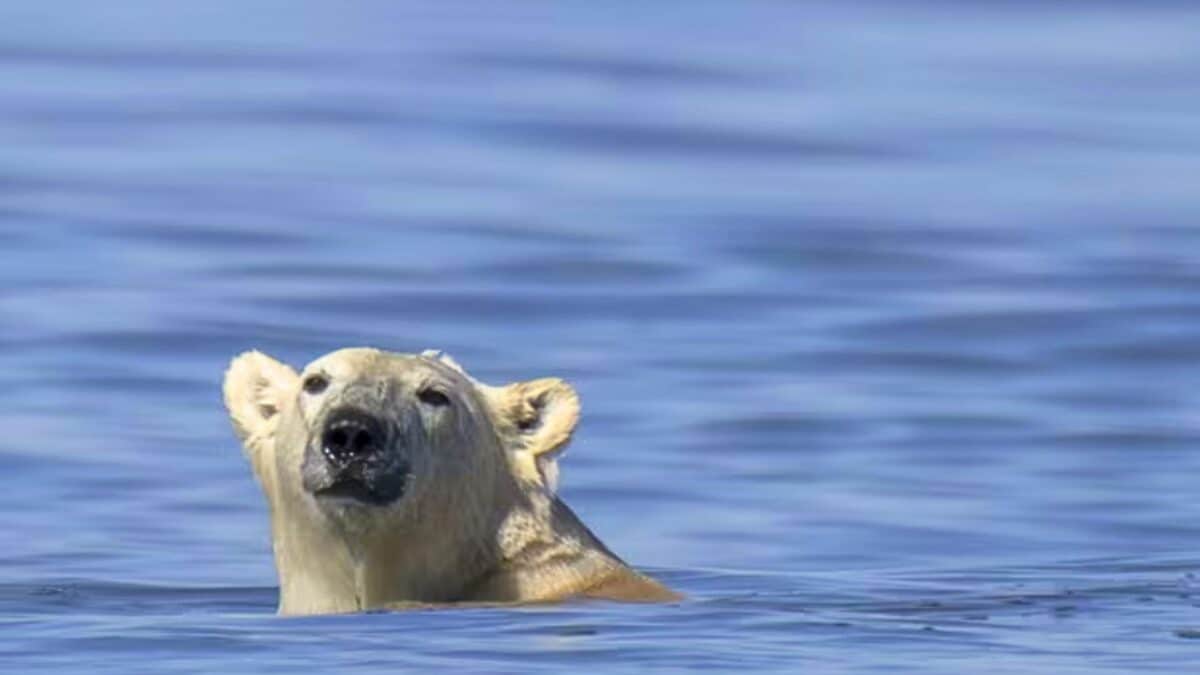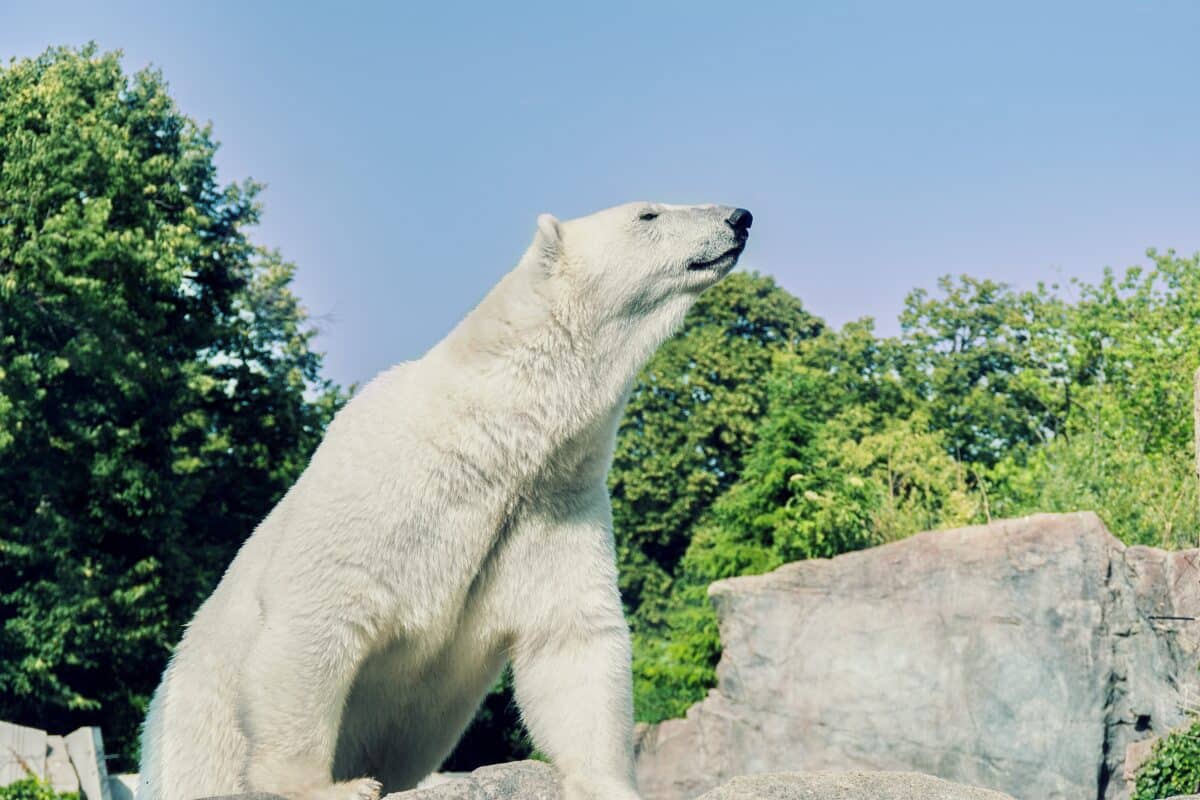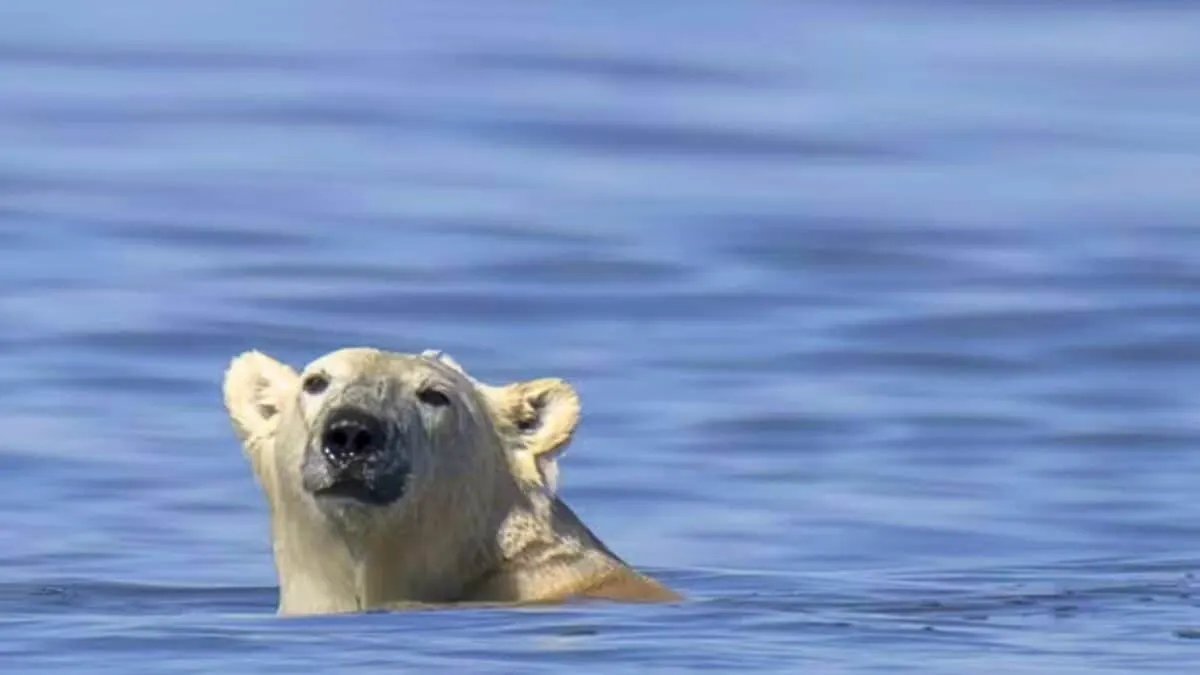In the icy expanse of Hudson Bay, Canada, a captivating sight emerges as a polar bear takes to the waters, highlighting nature’s beauty and the pressing concerns of climate change.

The Majestic Swimmer of the Arctic
Hudson Bay, a vast saltwater body in northeastern Canada, recently became the backdrop for a mesmerizing spectacle. Video footage captured a polar bear gracefully swimming in the bay’s icy waters, an awe-inspiring and thought-provoking sight.
Is It Common to See Polar Bears Swimming in Hudson Bay?
Polar bears are no strangers to water. They are excellent swimmers, capable of covering long distances. Their Latin name, Ursus maritimus, even means “maritime bear.” However, seeing a polar bear swimming in open waters, away from ice floes, is becoming increasingly common. This is not necessarily a sign of their love for swimming but rather an indication of the changing climate and its impact on their natural habitat.
Hudson Bay is home to a significant population of polar bears. During the colder months, the bay freezes, providing the bears with a vast icy platform to hunt seals, their primary food source. But with warmer temperatures, the ice breaks up earlier and forms later, reducing polar bears’ time on their hunting grounds.
The Climate Change Perspective

The phenomenon of polar bears swimming long distances in open water is directly linked to the melting of Arctic ice due to global warming. As the ice retreats, polar bears swim greater distances to find food or reach solid ground. Although a testament to the bear’s strength and endurance, these marathon swims are also fraught with danger. They expend more energy risk hypothermia, and young cubs, not as strong as adults, often struggle to keep up.
The melting ice doesn’t just affect polar bears’ hunting patterns. It also impacts their breeding habits. With less ice, female polar bears find building dens for their offspring challenging, leading to decreased cub survival rates.
A Glimpse into the Future
The sight of a polar bear swimming in Hudson Bay is a stark reminder of the fragile balance of our ecosystem. While it’s a captivating scene, it’s also a call to action. The challenges faced by polar bears are not isolated. Many species worldwide are feeling the effects of climate change, and their survival hangs in the balance.
The Video
Interesting Facts to Ponder
- Natural Swimmers: Polar bears have large, paddle-like limbs, making them natural swimmers. They can swim up to 6 miles per hour and have been known to swim for more than 60 miles without a break.
- Insulated for the Cold: Their thick layer of fat and dense fur protects them against the cold waters of the Arctic. This adaptation allows them to maintain a body temperature of 98.6°F, even in freezing conditions.
- Sense of Smell: A polar bear’s sense of smell is so acute that it can detect a seal nearly a mile away and beneath 3 feet of snow.
The Bottomline
In conclusion, the video of the polar bear swimming in Hudson Bay is a visual treat and a window into the challenges these magnificent creatures face. As the guardians of our planet, it’s our responsibility to address climate change issues and ensure that future generations can witness the beauty and majesty of the polar bear in its natural habitat.
Thank you for following along with this article!
Next up:
- Man Talking To a Brown Bear and Feeding Him Treats
- Woman Buys New Hammock For Bear Family In Her Yard
- Bear Sits Down Next to a Camper
- Lynx Saved From Cage Life Finally Gets To Experience What It’s Like To Be A Mom - April 30, 2024
- Sweet Dog was Left Behind When Couple Breaks Up – Gets Adopted - April 30, 2024
- Golden Retriever Puppy Stuck in Cupboard - April 29, 2024




Charles Andrew Mair
Thursday 7th of September 2023
You shouldn't be chasing the bear with a boat . Pretty sure you can get charged for that.
Nonya Biness
Monday 28th of August 2023
Polar bears swim in Hudson Bay all the time, and for many years. Quit trying to make everything about climate change. Climate has always changed. It is a cyclical phenomenon. When I went to school in the 70s & 80s, we were taught the climate was cooling, and we were headed into another ice age. Thirty years ago the “experts “ told us that the polar ice caps would be melted by 2010. Just stop always trying to make the population scared of things that will never happen.